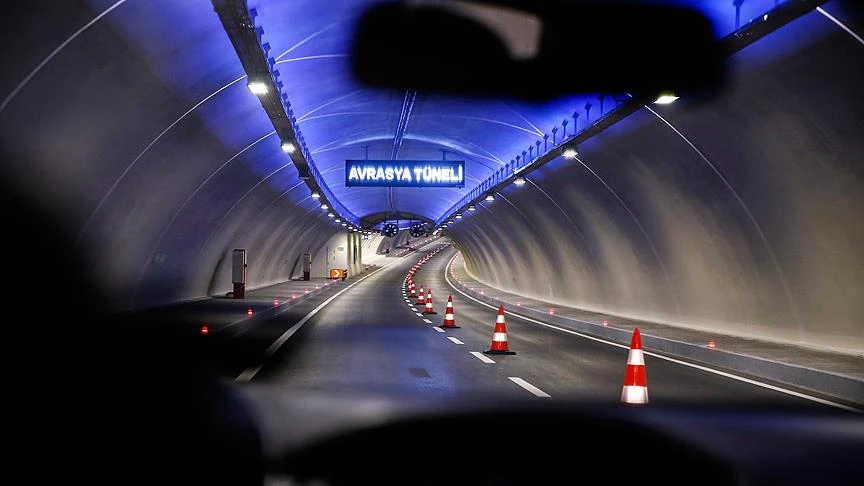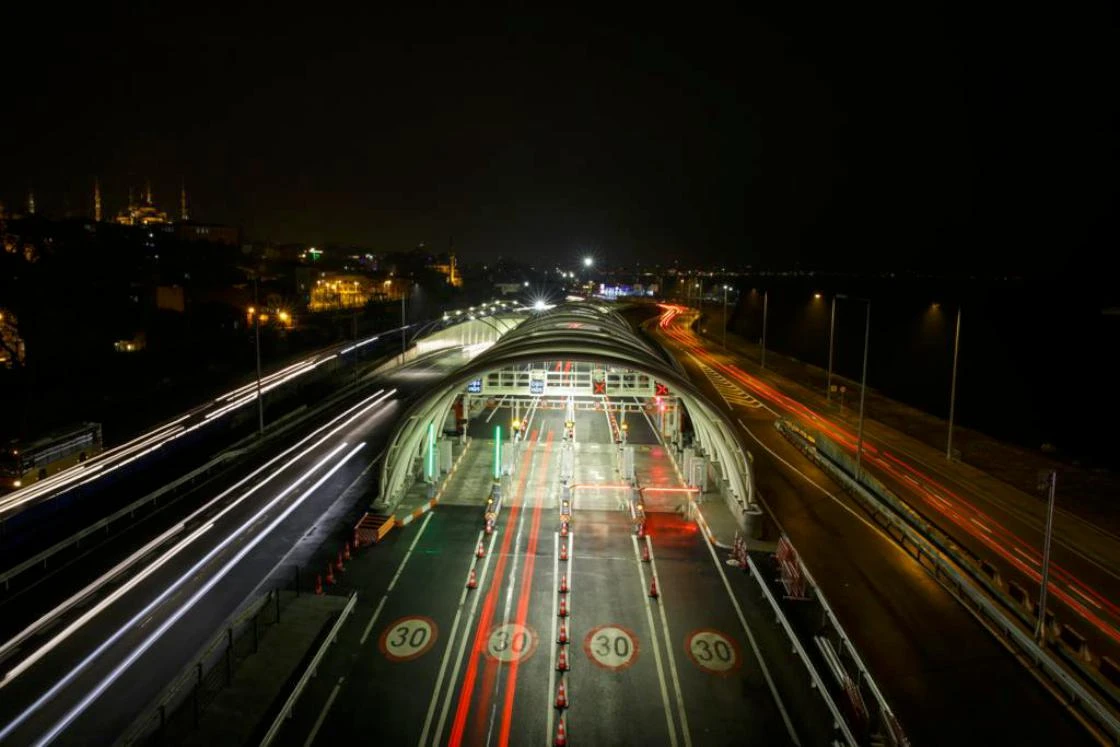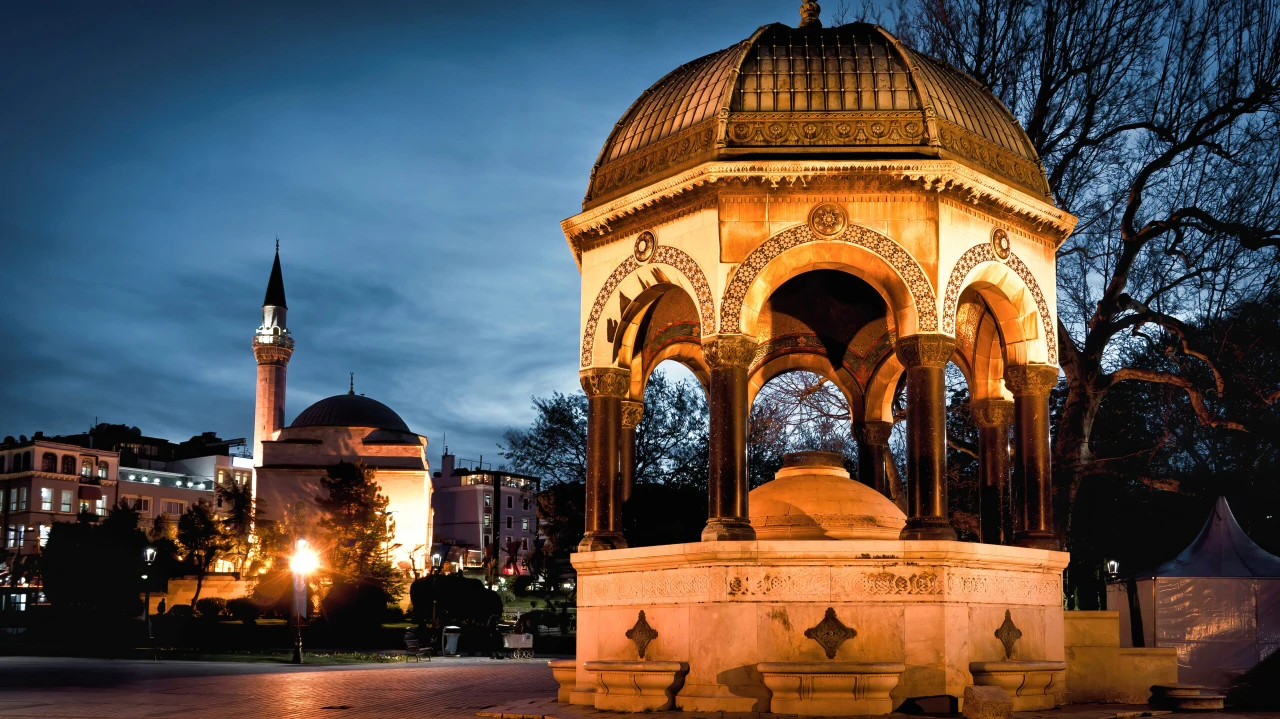Istanbul’s Eurasia Tunnel earns first OECD blue dot certification: Ministry
 A view from inside the Eurasia Tunnel in Istanbul, Türkiye, accessed on April 27, 2025. (AA Photo)
A view from inside the Eurasia Tunnel in Istanbul, Türkiye, accessed on April 27, 2025. (AA Photo)
The Eurasia Tunnel, which connects the two sides of Istanbul beneath the Bosphorus, has become the world’s first transportation project to receive the Blue Dot Network Certification, Türkiye’s Transportation and Infrastructure Minister Abdulkadir Uraloglu announced.
Uraloglu said the tunnel completed the certification process developed by the Organization for Economic Co-operation and Development (OECD). “For the first time, a project from Türkiye has obtained Blue Dot Network Certification,” Uraloglu added.
Uraloglu noted that the certificates were officially presented to ministry and Eurasia Tunnel officials during a ceremony held on April 24 at the OECD Conference Centre in Paris, hosted by the Secretary General of the Blue Dot Network.

He explained that the Blue Dot Network is a global initiative aimed at promoting high-quality, sustainable, and inclusive infrastructure investments. The Eurasia Tunnel, he said, fulfilled the program’s requirements of being “open and inclusive, transparent, supportive of the Paris Climate Agreement goals, and financially, socially, and environmentally sustainable.”
Over 155 million vehicles used Eurasia Tunnel
Recalling that the Eurasia Tunnel was inaugurated on Dec. 20, 2016, Uraloglu said the tunnel, which connects the Asian and European sides of Istanbul via a 5-kilometer (3.10 miles) double-deck subsea road, has provided a fast, economical, safe, comfortable, and environmentally conscious alternative for crossing the Bosphorus for over eight years.
Since its opening, more than 155 million vehicles have used the tunnel, according to the ministry. Uraloglu reported that calculations based on the Kozyatagi–Bakirkoy corridor showed the project had delivered significant economic and environmental benefits.
Over the past eight years, it saved users a total of 211 million hours in travel time, reduced fuel consumption by 261,000 tons, cut emissions by 115,000 tons, and decreased total vehicle-kilometers traveled by 590 million. These contributions, he said, generated an estimated $2 billion in economic value for Türkiye.
Uraloglu added that in 2024 alone, the tunnel provided $445 million in economic benefits through savings in time, fuel, accident costs, and emissions.
He also highlighted sustainability initiatives within the tunnel’s operations, noting that solar power plants with an annual production capacity of 322,880 kilowatt-hours were recently commissioned at the tunnel’s operations, ventilation, and transformer buildings.
“With 546 panels, five inverters, and 280 power optimizers installed, the solar plant now meets the electricity needs of the Eurasia Tunnel’s data centers,” he said.
The solar production is expected to cut carbon emissions by the equivalent of planting around 3,500 pine trees annually, preventing approximately 210 tons (231 short tons) of emissions each year.



